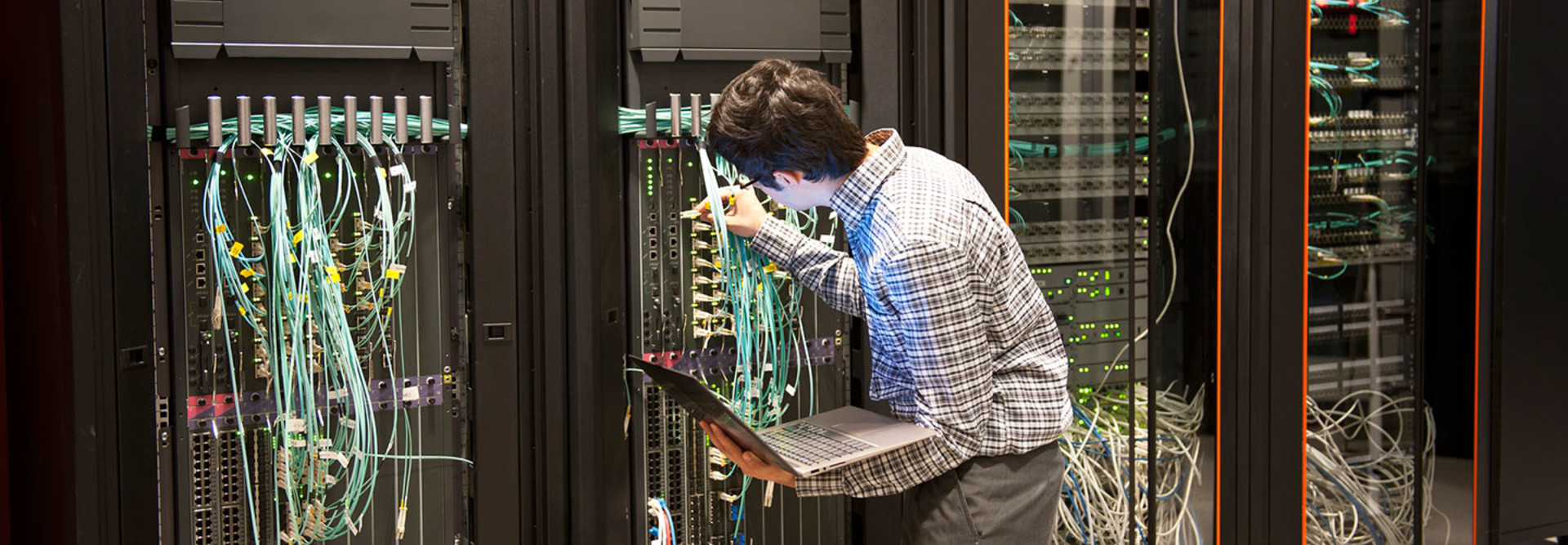Why Hybrid IT Might Make Sense for Your Data Center
For most organizations, a data center is an operation that supports a core mission, but it’s not part of the core business. In fact, some organizations might prefer not to have to run a data center at all.
“Most CIOs and IT executives are trying to figure out how to get out of the data center business,” says Bill Weaver, CDW vice president for advanced technologies, explaining that IT leaders are wary of the large capital expenditures they must make to build and maintain data centers, as well as the lack of agility that can come with running a large IT infrastructure.
But for now, most organizations are unwilling to move all of their data and workloads to the cloud. Rather, many are deploying a hybrid strategy that combines cloud services with on-premises IT. This approach is growing rapidly in popularity, and Gartner predicts that by 2020, 90 percent of organizations will adopt hybrid infrastructure.
The challenge for IT teams is to deliver the elasticity, nimbleness and scalability that can help organizations quickly take advantage of opportunities that arise, says Moe Khan, former director of Dell Customer Solution Centers. For data and workloads that remain in-house, organizations are modernizing their infrastructures to support advanced capabilities and drive innovation.
Technology Helps Organizations Overcome Challenges
CIOs have a much tougher job today than they did 10 years ago, says Gerry Seaman, director for hybrid cloud at Intel.
They must deal with mobile technologies that change the size and nature of their IT environments, as well as security threats that have grown into organized, well-funded enterprises poised to take advantage of any mistake an organization makes.
Further, organizations face compliance regulations that are increasingly complicated, such as HIPAA and the Payment Card Industry Data Security Standard.
Amid these challenges, IT leaders must find ways to leverage technology to create new revenue streams, most often in an environment that demands improved capabilities without offering more resources, such as funding or staffing. “It has really made that job much more strategic,” Seaman says.
But technology is evolving to help meet those demands. The pace of change driven by technological advances has been breathtaking. For example, Khan says, it took Hilton Hotels 100 years to be able to provide its customers with access to 600,000 rooms.
Airbnb has been able to offer its customers access to 1 million rooms in six years. Technology was the key to this breakthrough.
Cloud Simplifies IT Management
As data center technology advances, IT leaders strive to keep things simple. “One of the key things that we see our customers do is reduce complexity in their IT environments,” Khan says. Binny Gill, chief architect of Nutanix, agrees. “Complex is competent,” he says. “Simple is genius.”
The cloud offers a way for IT leaders to simplify operations. Deploying Infrastructure as a Service can help organizations offload the burden placed on IT staff, scale up or down quickly to meet changing demands and streamline budgeting while ensuring that the technology remains up to date.
Khan says the CIOs he meets with often wonder what workloads they can move to the cloud, but at the same time, they want to maintain some infrastructure on-premises. A hybrid approach to IT architecture could help with this. Some workloads are a good fit for the public cloud or an off-premises environment. For many organizations, the challenge is determining where to move specific workloads to optimize performance and efficiency.
Gill describes the next phase in data centers as a state of “cloud autonomy,” which will allow organizations to move easily between clouds, whether they are public clouds, private clouds run by a service provider or an on-premises data center.
Vendors such as Nutanix are developing solutions that will deliver this capability, providing one-click management for moving workloads within a hybrid cloud environment.
Software Changes the Way Data Centers Run
Software can now be used to manage many of the IT operations that hardware used to handle. Software-defined networking and software-defined storage (SDS) are rapidly changing the way data centers are built and operated.
Storage growth has proved to be a major hurdle for many organizations, Seaman says. SDS solutions provide an answer for many of the difficult questions that IT leaders face about how they’ll handle the massive growth in data that organizations must store and use.
SDS lets IT leaders pool storage resources so they can be used flexibly to meet emerging needs. This helps avoid storage silos, which can hamper agility.
Effective storage, whether in the cloud or on-premises, provides organizations with easy access to their data. This ready access has become essential to many organizations that employ analytics to take advantage of the massive amounts of data they create and compile.
Data Center Management Challenges Abound
As they move workloads to the cloud and deploy advanced technologies to simplify operations, data center operators still face many serious challenges.
Security is perhaps the most pervasive issue that organizations face, and the threat of ransomware has become nearly epidemic. For example, the Kaspersky Lab Malware Report found that in the first quarter of 2017, that the number of mobile ransomware files detected had reached 218,625, compared with 61,832 in the fourth quarter of 2016. Weaver says data center operators are making security a part of every conversation they have.
Maintaining an effective IT staff is another challenge, Seaman says. As organizations strive to attract and retain talented IT professionals, they also must figure out how to best use the staff on hand. In a modern IT environment, many technology responsibilities are handled by automation, rather than by the IT staff members who tended to these chores in years past. These IT professionals now have more time to find solutions that deliver value to the organization.
IT budgeting has changed as well, Weaver adds. CIOs must make a compelling case to justify their infrastructure investments, but many of them now get support in making decisions about IT spending from line-of-business leaders.
As they address the many challenges they face, IT leaders must maintain a flexible posture to deal with rapid changes in technology and business. The one thing that organizations can be certain of is that nothing stays the same. “We can only imagine what’s going to happen in the next couple of years,” Seaman says.








